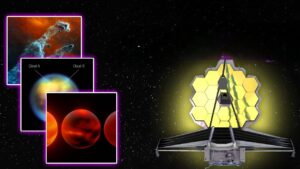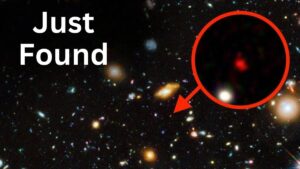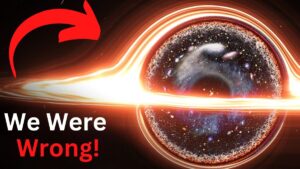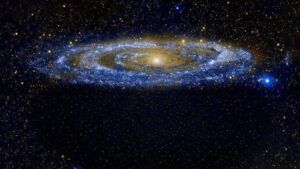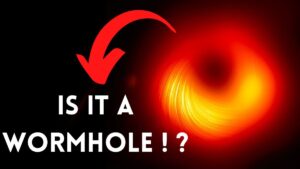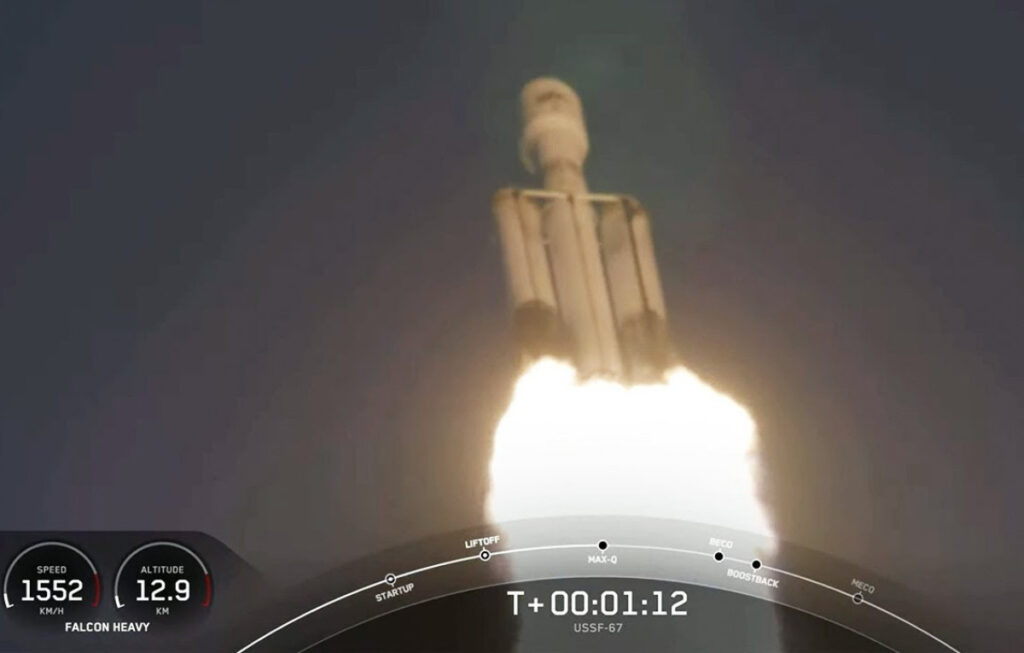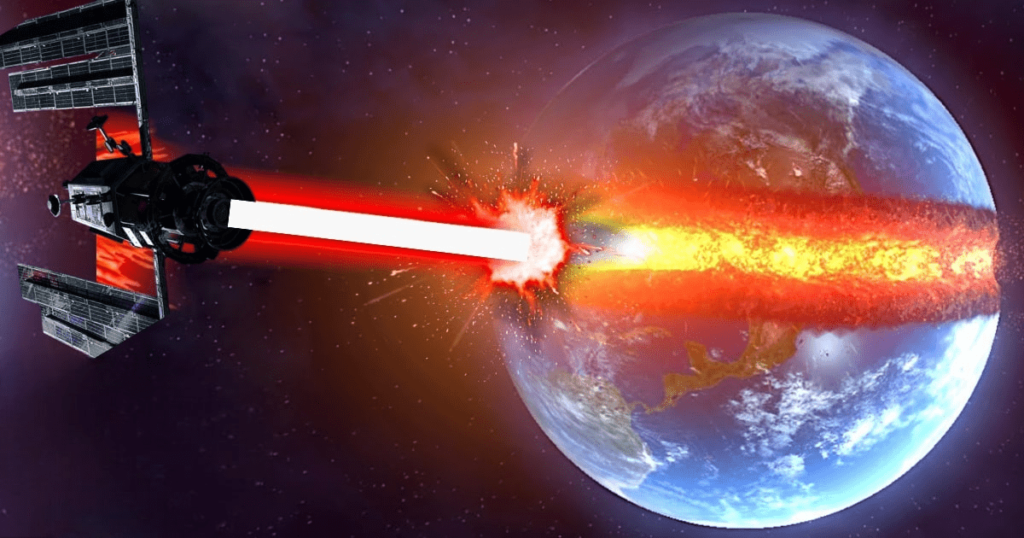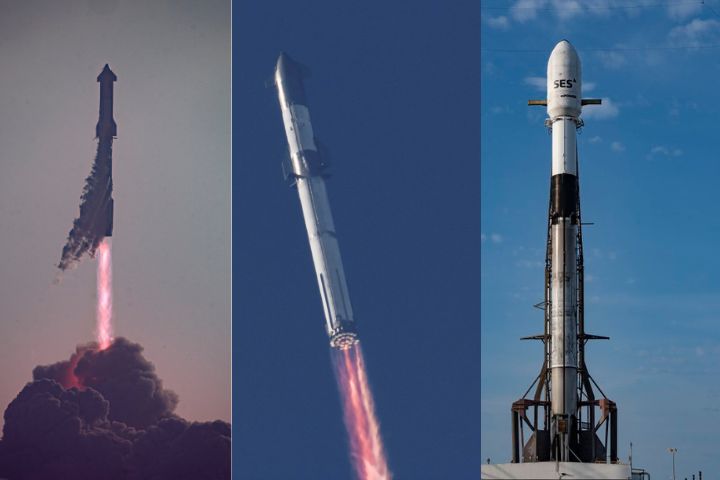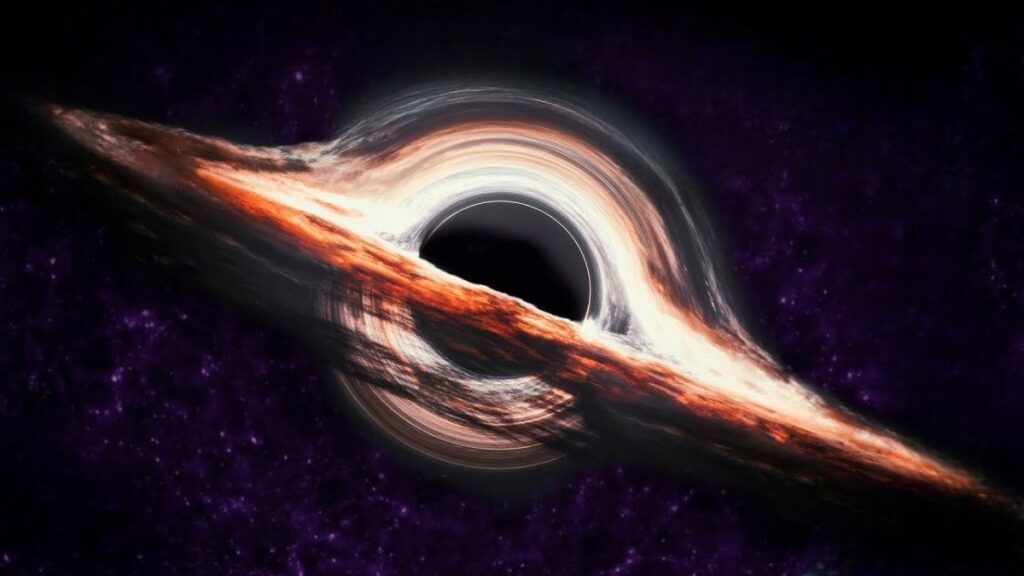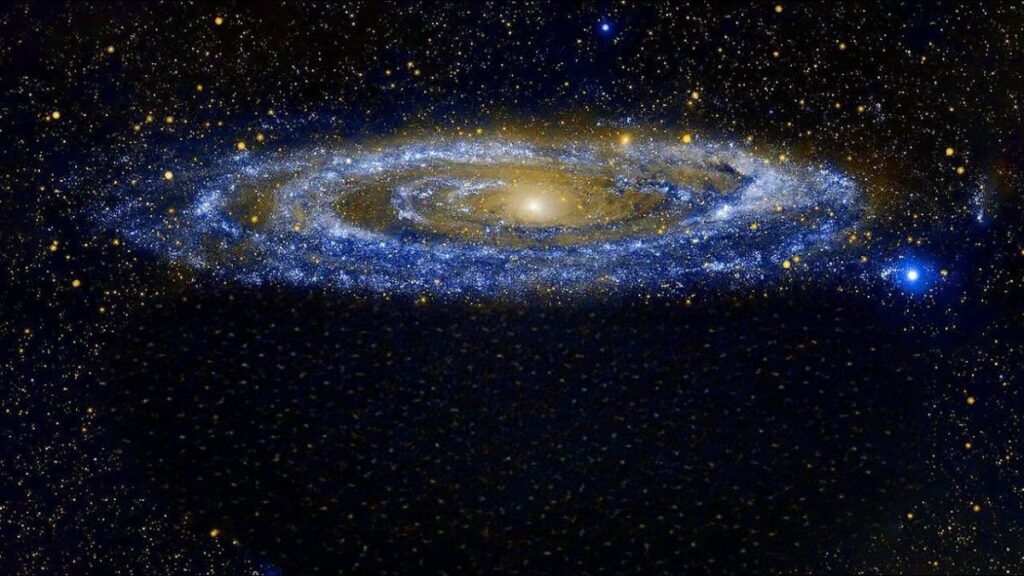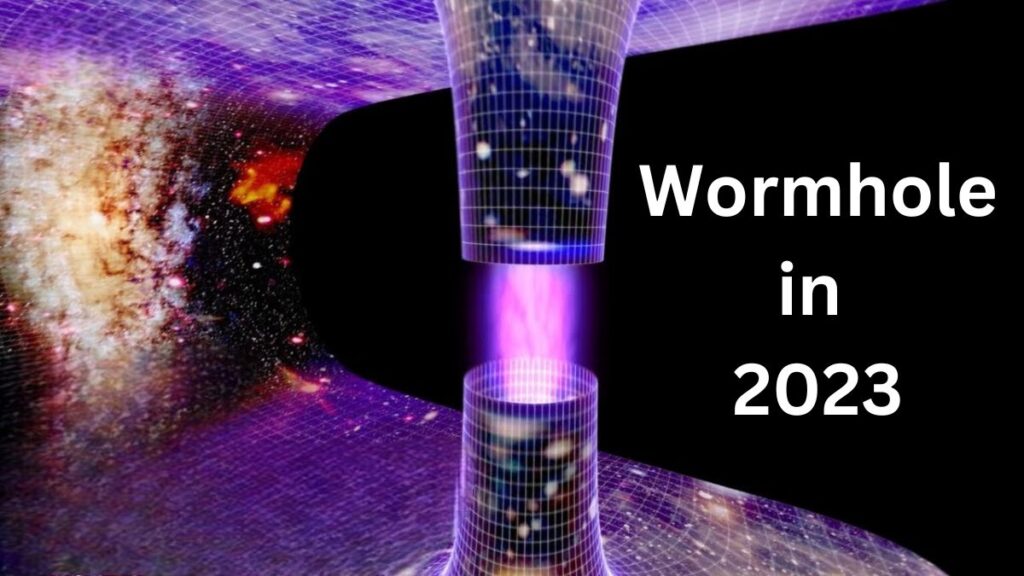
2023 is going to be a fantastic year for extragalactic astronomy.
We not only saw the most distant galaxies ever seen in 2022, but we also found the farthest single star ever seen.
The star has been given the name earendel, and astronomers have been looking for it for decades for a unique group of stars.
Earendel is 12 light-travel distances away.
9 billion light years, while the actual proper distance, taking into account the expansion of the universe, is 28 billion light years.
This indicates that the star existed when the universe was just 900 million years old, assuming the big bang theory is correct.
Therefore, earendel is approximately 8.2 billion years older than the earth and sun.
The hubble space telescope accidentally found the star for the first time.
The star’s parent galaxy was first observed by Hubble because it was being gravitationally distorted by a cluster in the foreground.
By thousands of factors, the objects in the background can be magnified using gravitational lensing.
As a result of it, the foundation universe containing earendel seemed like a bend that the stargazers named the dawn circular segment.
However, the group observed a bright object at the galaxy’s edge.
Events that are extremely energetic, such as novas, supernovas, or black hole-caused tidal disruptions, are typically the sources of light in faraway galaxies.
These are transients whose brightness fluctuates over time.
However, Hubble’s observations demonstrated that this object’s brightness did not change for more than three and a half years.
As a result, it was determined by astronomers to be a sunrise arc bright star with a gravitational lens.
Hubble was only able to provide a limited amount of information about this distant star due to its wavelength limitations.
In August, astronomers investigated earendel’s properties further with the help of the James Webb Space Telescope.
According to Webb’s findings, earendel is a b-type star whose surface temperature ranges from 13,000 to 16,000 degrees Celsius.
That is more than twice as hot as the sun’s surface.
Additionally, the distant star is between 600,000 and one million times brighter than the sun.
This is what makes the earendel discovery so exciting.
In astrophysics, the humphreys-davidson limit and the HD limit may be broken.
The impartial luminosity limit above which no stars have been observed, at least in the local universe, is referred to as the hd limit.
Therefore, if it turns out to be a single star with a luminosity that is one million times that of the sun, we might have to reevaluate the HD limit and impose new restrictions on it.
The possibility that this is the very first observation of a population iii star that astronomers have been looking for for decades makes Earendel’s discovery significant.
Two major chemical elements were produced through primordial nucleosynthesis: helium and hydrogen.
The first generation of stars, known as population iii stars, lacked metallicity because they only contained trace amounts of metals.
A metal is any element other than hydrogen and helium in astronomy.
Most of the population iii stars, according to astronomers, have already passed away, and the ones that are still around are pretty dim and hard to see.
The majority of candidates have been discovered in galaxies that are gravitationally lensed, making it nearly impossible to observe them in nature.
So follow-up perceptions of earendel are significant as they would uncover the idea of a portion of the main stars known to mankind exhaustively.
The new horizons probe was launched by NASA in 2006 to investigate Pluto, the ninth planet in the solar system at the time.
New Horizons, the first spacecraft to visit Pluto after nine years of travel, reached the distant world.
The spacecraft is now 50 astronomical units away from Earth.
That is more than 7.5 billion km or 4.6 billion miles.
However, astronomers are still analyzing the pluto flyby data, and in 2023, studies suggested that pluto is alive and is not as tranquil as it appears.
Numerous bumpy volcanoes of varying heights have been depicted in surface photographs of Pluto.
Surprisingly, there were no meteorite or asteroidal impact craters nearby, in contrast to the rest of the planet.
Additionally, there was no evidence of the plate tectonics process, which is crucial to the formation of mountains on Earth.
Together, these factors suggested that a recent geologic disturbance, possibly a volcanic eruption, was the cause of the formation of this surface.
Two volcanic peaks on Pluto were carefully studied by scientists: piccard mons and Wright mons.
Researchers have concluded, based on their examination of the images that were taken by new horizons, that multiple eruption sites close to one another must have fueled the formation of this terrain.
Additionally, it’s possible that the resulting cryovolcanic eruptions produced layers of ice that covered the entire region.
But where is the heat that is needed for volcanic activity?
In contrast to Earth, Pluto’s core lacks sufficient rocky material to generate sufficient radioactive heat.
In contrast to Jupiter’s moon Io, it does not even have massive objects in its vicinity that pull on it.
The dwarf planet still retains heat from its formation that is trapped within it, most likely in a deep water ocean beneath its icy crust, which is the only plausible scenario.
If cryovolcanism is still going on on Pluto today, it will make it more likely that there will be a liquid ocean there and maybe even life.
The beginning of the James Webb era occurred in 2023.
On Christmas Day in 2021, the $10 billion infrared space telescope was launched.
The l2 lagrange point, a million miles away, took a month to reach its destination, and it took another five months to calibrate and get ready for science observations.
On July 12, the James Webb Space Telescope released its first images.
A stellar nursery where hundreds of stars are being born, a dying star that has formed a spectacular ring of gas and dust around it, the deepest infrared image of the universe to date, a detailed spectrum of an exoplanet’s atmosphere, and a new visual grouping of five galaxies were among them.
Webb’s early release science program, on the other hand, produced ground-breaking observations in addition to these stunning images that reveal previously hidden details.
Webb is the most powerful infrared observatory, so it can see places in space that Hubble was unable to.
Consequently, Webb opened the doors to the first billion years of the universe’s history—the last unexplored period.
Star formation began approximately 150 million years after the universe began, according to the big bang theory.
Then, during the first 500 million years, these stars formed the first gas clusters, or protogalaxies, that clung to enormous dark matter structures that were hard to see.
These protogalaxies then, at that point, shaped the primary systems of the universe.
About a billion years must have passed through the entire process.
However, Webb’s observations cast doubt on the entire model.
Numerous of these tiny protogalactic fragments that have not yet merged to form a massive galaxy, according to astronomers, should be visible.
They, on the other hand, are seeing a few objects that are already large galaxies.
Star formation rates are high, absolute ultraviolet luminosity is high, and stellar masses are high in the super-early galaxies discovered by Webb in the first 200-300 million years of the universe.
How did these massive galaxies form so early if star formation began 150 million years after the big bang?
What is causing these early galaxies to have such a high rate of star formation?
Our models of star formation and galaxy evolution may require significant revisions, according to astronomers.
Or, we need to learn more about how dark matter contributes to the universe’s massive structure formation.
By observing a larger portion of the sky for hundreds of hours, the upcoming Cosmos-Webb program is anticipated to significantly increase the population of early galaxies.
We anticipate finding thousands of these galaxies, which will allow us to improve our database and create accurate models.
A few evaluations propose webb could see similar to a redshift of 26, only 120 million years after the enormous detonation.
It would mark a turning point in astronomy if it is accurate.
In the field of wormhole research, 2023 was a pivotal year.
Exotic objects known as wormholes bridge spacetime between two distant regions.
They are speculative connections that are thought to serve as “shortcuts” between regions of our universe.
Additionally, they might be connecting two distinct universes.
As a result, a wormhole’s “throat” could link two universes, with the entrance to one universe and the exit to the other.
Hypothetically, they can interface significant distances like billions of light-years and brief distances of a couple of meters.
Einstein-Rosen bridges were the first to introduce the concept of wormholes in 1935.
Einstein and Rosen discussed the possibility of a bridge connecting two spacetime points that are far apart in their paper, which is now known as er.
However, they found that such designs would be unpredictable and breakdown assuming we attempted to cross them.
Another quantum mechanics-related paper was published that same year.
Quantum entanglement, which Einstein referred to as a “spooky action at a distance,” was the topic of the epr paper.
Quantum entanglement is a phenomenon in which two particles can be created in such a way that any change in one would have an effect on the other, regardless of where they are in the universe.
Physicists held the view that there was no connection between wormholes and quantum entanglement for decades.
However, researchers proposed in 2013 that er is equivalent to epr.
This indicates that entanglement and wormholes are the same thing.
Because one is connected to general relativity and the other to quantum mechanics, that is a bold assertion.
To test the case, a gathering of physicists chose to plan a quantum circuit that is numerically comparable to a wormhole.
What’s more, when they did that utilizing google’s quantum PC, they observed that er is basically epr; Quantum entanglement and wormholes are essentially the same thing.
That’s a big result because this study has opened a new door to finding a way to combine general relativity and quantum mechanics—a physics holy grail.
Astronomers published the first image of the massive black hole at the center of the Milky Way on May 12, 2023.
It is known as sagittarius a* because it is on the border of the sagittarius and scorpius constellations.
The supermassive black hole is just 52 micro-arc-seconds in the sky and 27,000 light years away.
Consequently, observing this black hole through telescopes would be analogous to observing a moon-sized doughnut.
The method used to create this black hole image was difficult to perfect for many years.
It is a significant turning point in computational physics and radio astronomy that underpins current research.
Based on 2017 radio interferometer data, the sagittarius star image was released.
Technically, it is a picture of the accretion disk around the horizon of Sagittarius a*. It took five years of calculations and six different radio telescopes to collect the data from it.
There were approximately 6000 TB of data produced, which, if printed on paper, would have reached the moon.
The shadow cast by a black hole is directly proportional to its mass.
The image-based mass analysis performed by astronomers perfectly matched the theoretical values of four million solar masses.
Thus, Einstein’s general theory of relativity has passed yet another stringent test with flying colors with this image.
Related:
